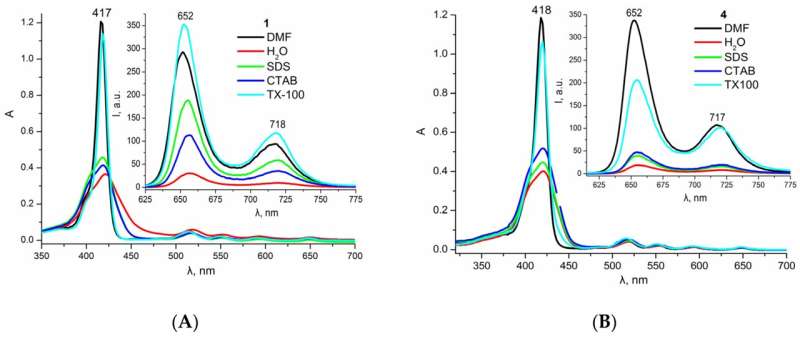This article has been reviewed according to Science X's editorial process and policies. Editors have highlighted the following attributes while ensuring the content's credibility:
fact-checked
trusted source
proofread
Chemists find potential new drug for photodynamic cancer therapy

A modern alternative to chemotherapy and radiotherapy is photodynamic therapy. It is used to treat cancer, skin diseases, and infectious diseases. The essence of the method is that light-sensitive substances are introduced into the blood, which accumulate in the affected tissues. They are then irradiated with light of the desired wavelength and intensity.
Light-sensitive substances react to this and destroy unhealthy cells. Healthy cells are practically not affected. One of the main challenges of this approach is to find a suitable light-sensitive compound.
For photodynamic therapy, RUDN University chemists and colleagues have created new potential drugs from porphyrin. The work is published in the journal Inorganics.
"Porphyrins are one of the key substances in nature. They are, among other things, the 'building blocks' of hemoglobin and chlorophyll. Porphyrins have attracted the attention of chemists and doctors because their properties can be controlled by changing their molecular structure. Therefore, the creation of systems based on porphyrins is a promising and important direction," Alexander Novikov, Ph.D., a leading researcher at the Joint Institute of Chemical Research of RUDN University said.
Chemists used five derivatives of this substance and obtained three dimers-paired porphyrins. The same group of chemists obtained the initial single monomers in previous works. RUDN University chemists and colleagues studied the chemical properties of the resulting dimers and monomers, as well as the structure of their surface. The researchers then tested how the new compounds acted on the HEK 293T cancer cell line, obtained from a human embryonic kidney.
The process of obtaining new compounds showed good efficiency—the yield of target substances was 80%–85% of all reaction products. Fluorescence, that is, glow after irradiation with light, turned out to be similar in parameters for monomers and dimers. However, the latter showed an increased quantum yield. This means that the reaction to light is more pronounced. Cytotoxicity, that is, the ability to suppress cell activity, turned out to be higher in the new dimers. For example, to inhibit the same number of cancer cells, it took 720 milligrams of the monomeric porphyrin derivative and only 111 milligrams of the dimeric derivative.
"New porphyrin dimers and their complexes have been obtained in good yields. The cytotoxicity of the resulting dimers increased significantly compared to monomers. Dimeric porphyrins have shown good potential for photodynamic therapy. However, they will need means of delivery to the desired cells," Alexander Novikov, Ph.D., a leading researcher at the Joint Institute of Chemical Research of RUDN University said.
More information: Kseniya A. Zhdanova et al, Synthesis, Photophysical Properties, and Toxicity of o-Xylene-Bridged Porphyrin Dimers, Inorganics (2023). DOI: 10.3390/inorganics11100415
Provided by RUDN University





















